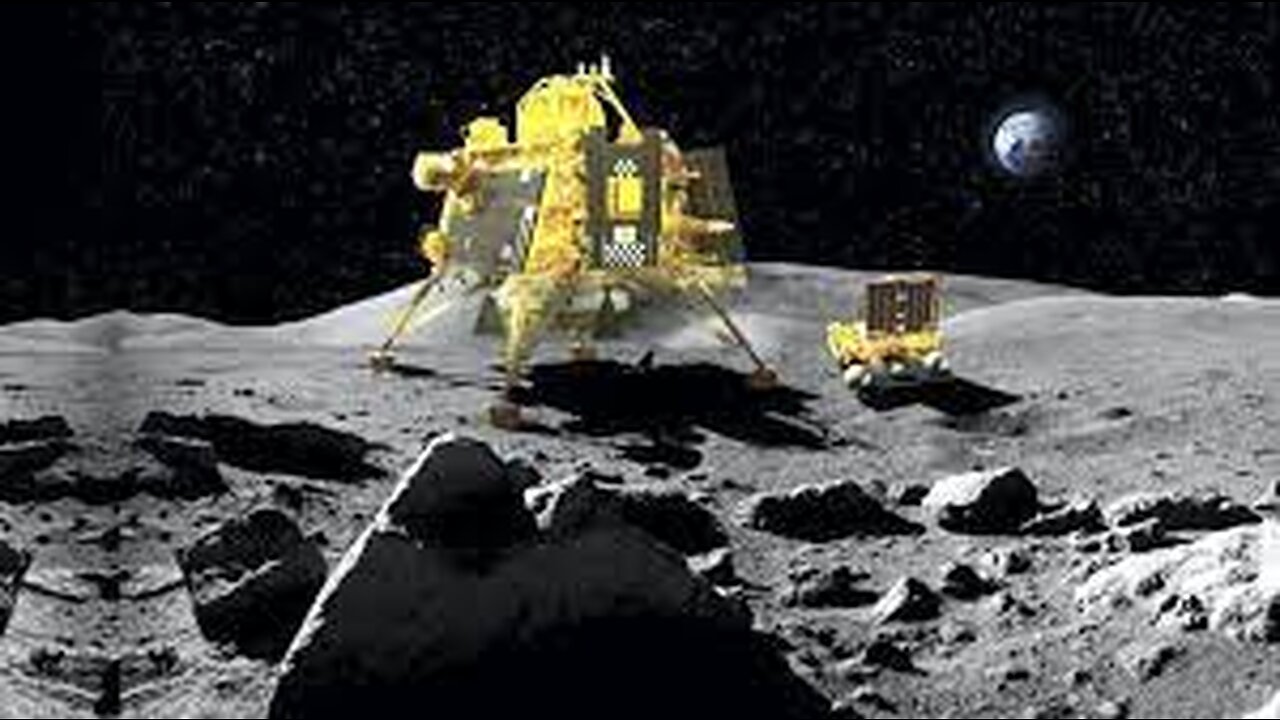Premium Only Content

First 8K Video from Space - Ultra HD|Chandrayaan-3
Chandrayaan, which means "moon craft" in Sanskrit, refers to the series of lunar missions conducted by the Indian Space Research Organisation (ISRO). Chandrayaan-1, India's first lunar mission, marked a significant milestone in the country's space exploration journey.
Chandrayaan-1 was launched on October 22, 2008, by the ISRO using the Polar Satellite Launch Vehicle (PSLV-C11). This mission aimed to explore the moon's surface and gather valuable scientific data. It carried 11 scientific instruments, including a Moon Impact Probe (MIP) that was released and impacted the lunar surface, furthering our understanding of the moon's composition and characteristics.
One of the most notable discoveries of Chandrayaan-1 was the presence of water molecules on the moon's surface. This discovery challenged earlier assumptions about the moon being completely dry and significantly contributed to our understanding of the moon's geological history and its potential as a future resource for human space exploration.
Chandrayaan-1 was initially planned to operate for two years, but the mission was abruptly terminated in August 2009 due to communication problems. Despite this setback, the mission was considered a success, as it achieved its primary objectives and provided a wealth of data for lunar scientists and researchers.
Following the success of Chandrayaan-1, India embarked on Chandrayaan-2, the country's second lunar exploration mission, which aimed to land a rover on the moon's surface. This ambitious mission showcased India's growing capabilities in space exploration and cemented its position as a significant player in the global space community.
In summary, Chandrayaan-1 was India's first lunar mission, launched in 2008 using the Polar Satellite Launch Vehicle (PSLV-C11). It made significant contributions to lunar science, including the discovery of water molecules on the moon's surface. This mission marked a historic milestone in India's space exploration endeavors and set the stage for future lunar missions, including Chandrayaan-2.
-
 37:44
37:44
Glenn Greenwald
19 hours agoGlenn On Tearing Down the Military Industrial Complex, Exposing Pro-Israel Indoctrination, and More | SYSTEM UPDATE #411
138K202 -
 4:04:20
4:04:20
Nerdrotic
18 hours ago $57.17 earnedAmazon Takes 007! Hollywood is Lost, Disney Cancels WHO? | Friday Night Tights 342 /w ItsAGundam
196K55 -
 43:27
43:27
Tucker Carlson
17 hours agoRay Dalio: America’s Hidden Civil War, and the Race to Beat China in Tech, Economics, and Academia
213K210 -
 56:56
56:56
Candace Show Podcast
18 hours agoEXCLUSIVE: Taylor Swift Will Be Deposed. | Candace Ep 150
248K200 -
 1:03:52
1:03:52
IsaacButterfield
15 hours ago $10.86 earnedRepublican Vs 25 Transgender Activists | Jewish Outrage | Lizzo Loses All the Weight
86.4K24 -
 1:10:23
1:10:23
Edge of Wonder
19 hours agoChinese Biochips Hacking Minds? Quantum Control & Journey Song Mandela Effect
101K9 -
 2:15:46
2:15:46
Quite Frankly
22 hours ago"Ghosts, Robotics, and OBE's" ft. Dr. Albert Taylor 2/21/25
90.1K19 -
 55:52
55:52
LFA TV
1 day agoMaking Germany Great Again | TRUMPET DAILY 2.21.25 7PM
60.6K12 -
 1:52:26
1:52:26
2 MIKES LIVE
17 hours ago2 MIKES LIVE #183 Open Mike Friday with Hannah Faulkner and Adelia Kirchner!
44.5K -
 12:09
12:09
MrBigKid
18 hours ago $3.57 earnedNew Mossberg 590R: Tactical Homestead Defender
48.2K7